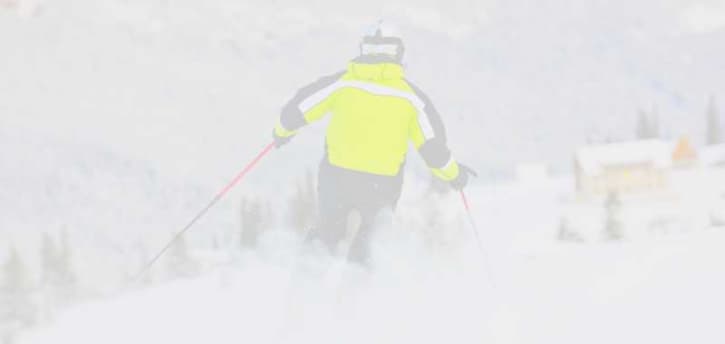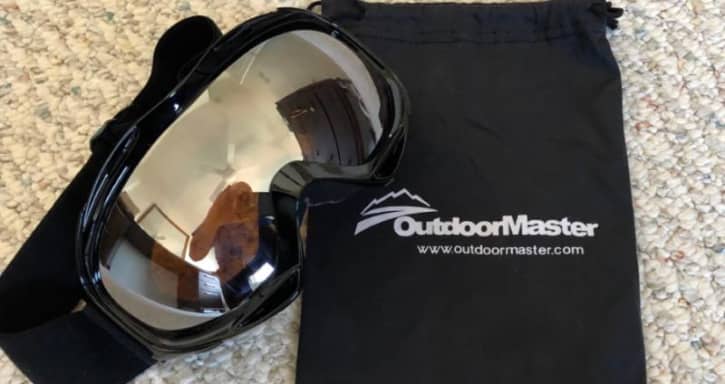Ever had an awesome day on the ski slopes dampened by impaired vision from fogged up goggles? You’re not alone.
For anyone who does snow sports, fogging is always an issue. No matter what type of goggles you have, the laws of nature can manage to find a way to fog them up. While it’s not possible to stop all fogging all of the time, these 13 tips will give you the best chance of mitigating it.
Contents
1. Understand Why It Happens
Understanding why fogging happens is the first and most important thing you can do to prevent it. Through understanding, you can begin to spot behaviors you’re doing that might cause it, even if they aren’t listed here or anywhere else.
Fogging occurs because the warm and moist air inside your goggles is coming in contact with the cold surface of your lens. This humid air condenses into drops of water that build up on your lens.
To mitigate fogging, one should aim to:
- Reduce the amount of moisture inside the goggles.
- Keep the temperature inside the goggles as close to the outside temperature as possible.
Anti-fog solutions that goggles are treated with nowadays can only suck up a certain amount of moisture. The rest is up to you.
2. Stay in Motion
Most modern day goggles will have some form of ventilation. Some will even have battery powered fan systems. The entire purpose behind these ventilation systems is to get to let the cold air in and force the warm air out.
Staying in movement is the best way to keep the air flowing.
If you’re just getting off the lift and your goggles are a bit foggy, see how they do after going down the mountain a small distance at a decent speed. You don’t want to go gung-ho down a double black diamond trail with your vision impaired, so make sure things have cleared up before committing to a trail you would have trouble with.
3. Let Air In On the Lifts
Things tend to move a bit slowly on the lifts, so even with vents, there might not be enough wind for them to function fully. To keep your goggles cool, just lift them off your face slightly and let some air in. You don’t need to go crazy, just a few seconds should be enough to let the air inside and outside the goggles even out a bit.
If your gloves have snow on them, be extra careful to not get any snow or moisture on the vents of your goggles. This could make the problem worse.
4. Check the Vents for Snow and Moisture
If it’s a snowy day or you’ve taken a mean fall, the vents and padding of your goggles could have moisture and snow already on them. This could be causing higher humidity inside your goggles and you need to get rid of it ASAP.
But be careful about using your gloves or your fingers to wipe it off. You might end up rubbing the snow in. Instead, tap your goggles against a hard surface so that the snow falls off.
If the padding on your goggles has already been saturated with water, the only option may be letting them dry naturally.
5. Wear a Helmet With a Visor
When snow is coming down from the sky, a properly fitted visor helmet is the only thing between moisture and the top portion of your goggles. When selecting such a helmet, you still want to make sure there is a little room between the top vents of the goggles and the visor. If you block the vents off completely, it will interfere with their function.
6. Don’t Rest Goggles On Your Head
Heat rises. If you rest your goggles on the top of your head or on a vented helmet (most are), then all of the hot humid air from your body is going to go into the goggles. It’s best not to remove your goggles from your eyes during your runs unless you absolutely have to.
7. Properly Dry Out Your Goggles
When you’re done skiing for the day, the best thing to do is to let your goggles rest on the counter or some other place where they can dry naturally. Some people will recommend using a hair dryer, but this can potentially lead to issues down the road. Just be patient.
Instead, you’re probably better off with this next tip…
8. Keep a Spare Handy
Drying goggles takes time. Sometimes the inner foam parts get wet and there’s absolutely nothing you can do about it. That’s why having a spare to throw on is really important.
They don’t have to be an expensive pair. In fact, even goggles below $20 are pretty good as long as they have dual-pane lenses and vents. You’re better off skiing with dry cheap goggles than no goggles at all!
9. Don’t Tuck Neck Warmer or Balaclava
If it’s a really cold day, you might be tempted to tuck your balaclava and your neck gaiter under your goggles to make your face completely sealed off. This is a really bad idea.
Your breath is warm and moist, especially if you’re going pretty hard and sweating under your base layers. If it has a direct pathway to your goggles, things are going to get fogged up really quickly.
The best thing you can do is leave a small separation between your goggles and balaclava, leaving your nose slightly exposed.
10. Make Sure Your Ski Mask Has Ventilation
Even with some separation between your ski mask and goggles, there still is the potential for hot air to rise up as you breathe if your mouth is covered. Ski masks can have one or two methods of ventilation.
- An airhole which your breath can go out of.
- A mesh material which is air is better at passing through than the rest.
An affordable model is the Ergodyne N-Ferno Balaclava which I’m currently using. See my full review on it here.
11. Don’t Overdress
It’s cold out there, but don’t make the mistake of dressing too warm. Simply dress appropriately for the day. Opening vents in your jacket and peeling off layers are actually a great way to prevent fogging. The more you sweat the more moisture and heat your body is going to give off. That moisture has to go somewhere and because heat rises, much of it will go up and out through the neck.
12. Watch What You Wipe With
If you’re really desperate for clearing moisture off your lenses, resist the temptation of using your glove. You’re likely just going to move it around, pushing water into the foam of the goggles. Even worse, you might end up scratching the lenses and removing some of the built-in anti-fog coating.
Instead, you can carry a soft microfiber cloth around for emergencies. If you have to, use that to clean your goggles instead.
13. Know The Key Features and Upgrade
If you’ve got an old pair of ski goggles, you might not have the latest anti-fog technology. At the very least, your goggles should have:
- Ventilation around the rims to which help keep temperature consistent inside and outside.
- Double pane lenses that do the same thing by harboring a layer of air between each lens.
- A built-in hydrophilic coating on the lenses which absorbs moisture and keeps it from fogging up.
Most pairs of new goggles, even the cheaper ones should have these features.
Want to learn more? Check out our other articles on ski goggles:
Best OTG Ski Goggles for People With Glasses
Good luck and hope you have a fog free day!






